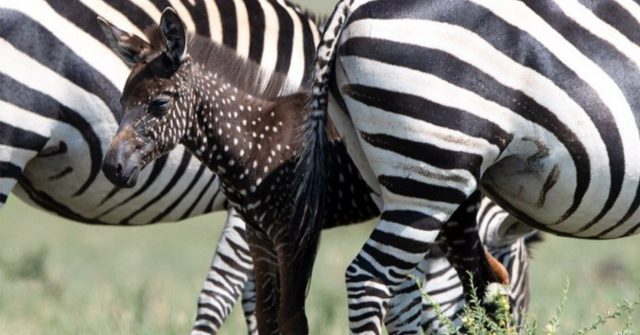Last year, while in search of rhinos, Frank Lui, an experienced, wild-life photographer spotted an incredibly rare baby zebra in the Masai Mara National Reserve in Kenya. Obviously, he immediately captured it on camera. For what he saw was truly eye-catching and fascinating.
The baby zebra that was likely about a week old had a dark coat, only there weren’t any white stripes on her body, but polka dots. Yes, you read it right. This zebra foul called Tira had dots instead of stripes and looked like an entirely different species.
https://www.instagram.com/p/B2Y8Ba5gJj4/
At first, the photographer thought that the baby zebra had probably been captured and pained for migration purposes. However, shortly after sharing the photos on the internet, Ren Larison, a biologist from Los Angeles explained that the odd coloration on the zebra’s skin is due to an uncommon pigment condition called pseudomelanism.
https://www.instagram.com/p/B2Y8fUbA3yu/
She continued by explaining that all zebras have in fact dark skin and their white stripes are a result of the melanocytes – the special skin cells that transfer melanin to their hairs. However, this synthesis can be altered by a variety of mutations. As a result, some zebras can be quite different than others. That is why there are albino zebras, which are also extremely rare to find.
“There are a variety of mutations that can disturb the process of melanin synthesis, and in all of those disorders, the melanocytes are believed to be normally distributed, but the melanin they make is abnormal,” added Greg Barsh, a geneticist at the Hudson Alpha Institute for Biotechnology.
Unfortunately for Tira, this condition may come with certain consequences for her.
According to research, zebra stripes have evolved to deter against biting flies. This is just one of the theories out there, along with the temperature and camouflage regulation.
However, experiments on the field have shown that the black and white stripe pattern does indeed disorient biting flies and makes their landing difficult, which explains the theory that they are indeed zebra’s natural fly repellent.
If this is true, poor Tira stands no chance against the flies, and sadly, she is very likely to get infected with equine influenza.
But if she does indeed survives her adulthood, there is no reason to believe that she won’t become a part of the herd. So, it’s not all dark as it seems. Let’s just hope that this gorgeous creature will have a chance at a peaceful life.


